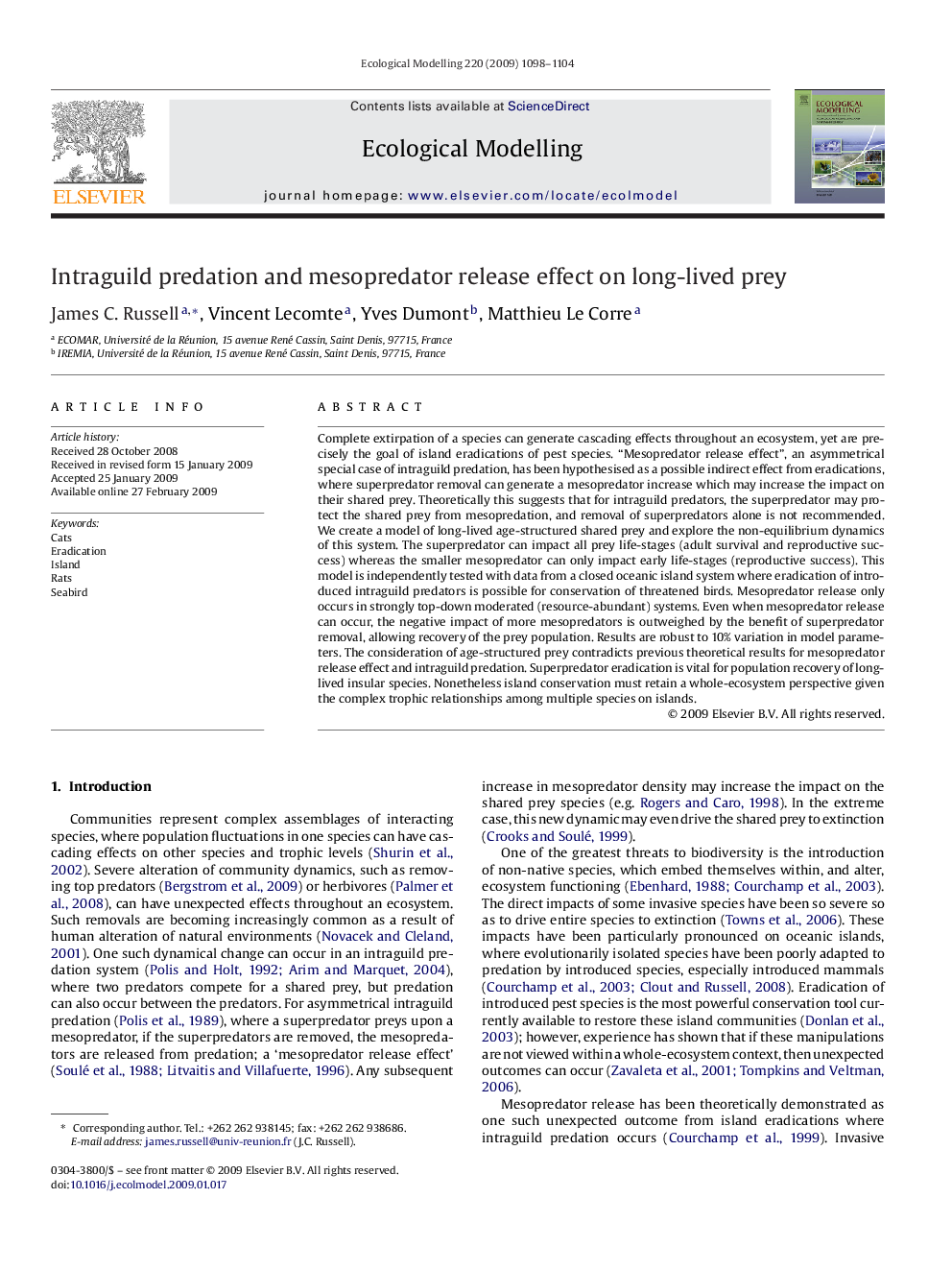| Article ID | Journal | Published Year | Pages | File Type |
|---|---|---|---|---|
| 4377842 | Ecological Modelling | 2009 | 7 Pages |
Complete extirpation of a species can generate cascading effects throughout an ecosystem, yet are precisely the goal of island eradications of pest species. “Mesopredator release effect”, an asymmetrical special case of intraguild predation, has been hypothesised as a possible indirect effect from eradications, where superpredator removal can generate a mesopredator increase which may increase the impact on their shared prey. Theoretically this suggests that for intraguild predators, the superpredator may protect the shared prey from mesopredation, and removal of superpredators alone is not recommended. We create a model of long-lived age-structured shared prey and explore the non-equilibrium dynamics of this system. The superpredator can impact all prey life-stages (adult survival and reproductive success) whereas the smaller mesopredator can only impact early life-stages (reproductive success). This model is independently tested with data from a closed oceanic island system where eradication of introduced intraguild predators is possible for conservation of threatened birds. Mesopredator release only occurs in strongly top-down moderated (resource-abundant) systems. Even when mesopredator release can occur, the negative impact of more mesopredators is outweighed by the benefit of superpredator removal, allowing recovery of the prey population. Results are robust to 10% variation in model parameters. The consideration of age-structured prey contradicts previous theoretical results for mesopredator release effect and intraguild predation. Superpredator eradication is vital for population recovery of long-lived insular species. Nonetheless island conservation must retain a whole-ecosystem perspective given the complex trophic relationships among multiple species on islands.
